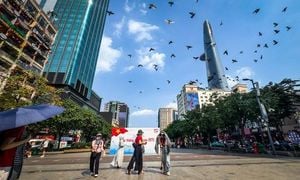Australia's youngest killer, known only as SLD due to legal restrictions, has been arrested less than a month after his release from prison. He now faces serious allegations of breaching supervision orders and possessing child abuse material. SLD, who served 20 years for the murder of three-year-old Courtney Morley-Clarke in 2001, was taken into custody again on April 9, 2025, in Campbelltown, New South Wales.
At the age of just 13, SLD committed the heinous act that shocked the nation. He abducted Courtney from her home on the NSW Central Coast and fatally stabbed her in the heart. His release on March 15, 2025, after serving his original sentence, was met with widespread concern due to his history and the circumstances surrounding his crime.
Upon his arrest, SLD was charged with four counts of breaching his extended supervision order and possessing child abuse material. He appeared in Campbelltown Local Court on April 10, where he was formally refused bail and remanded in custody, pending his next court appearance on April 24.
SLD's original murder sentence expired in 2021, but authorities implemented rare post-sentence detention orders due to ongoing concerns about his potential threat to the community. During a brief period of court-ordered close supervision in 2023, SLD approached around 200 women over 95 days, including several mothers with young children. One significant incident involved him unlawfully interacting with a mother dressing her child at a beach, which prompted his return to jail.
Despite these alarming behaviors, Justice Mark Ierace dismissed the state's application for further detention in March 2025, stating that SLD had only been out in the community for a short time since his release. He noted the unusual nature of the case and the challenges it presented.
In a chilling revelation, SLD recently suggested that his motive for killing Courtney was revenge for alleged bullying by her brother. This disturbing insight into his mindset raises serious questions about his rehabilitation and readiness to reintegrate into society.
Psychiatrists have diagnosed SLD with a severe personality disorder, describing him as self-centered and unempathetic. They expressed concerns about his fixation on revenge and the potential for violent reactions if he feels wronged. These assessments contributed to the ongoing debate about his risk of re-offending.
SLD's initial release was controversial, with many arguing that he posed a significant danger to the community. His history of violence, including choking a nurse while incarcerated, and his recent obsession with establishing romantic relationships after spending over two decades in prison, further fueled fears about his potential for re-offending.
Upon his arrest, police found SLD in possession of child abuse material, adding another layer of severity to the charges against him. This discovery has intensified scrutiny over the decisions made regarding his supervision and release.
As the legal proceedings unfold, the public remains on edge, grappling with the complexities of justice and rehabilitation in cases involving violent offenders. The tragic murder of Courtney Morley-Clarke continues to haunt the community, and the implications of SLD's actions resonate deeply.
SLD's case raises critical questions about the effectiveness of the justice system in managing high-risk offenders. The balance between public safety and rehabilitation remains a contentious issue, and many are left wondering if enough is being done to protect the community from individuals with such violent histories.
The next court date on April 24 will be closely watched as it will determine SLD's future and the potential for further legal consequences stemming from his recent actions. The community's concerns about safety and justice will undoubtedly remain at the forefront of discussions surrounding this case.
As Australia grapples with the implications of SLD's return to prison, the tragic story of Courtney Morley-Clarke serves as a painful reminder of the consequences of violence and the complexities of the legal system in addressing such cases. The narrative of SLD is one not just of crime and punishment but of a society's struggle to reconcile its values of justice, safety, and redemption.








